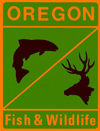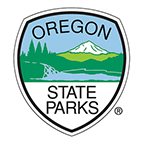Welcome to where the land meets the sea!
Tides regularly uncover and recover the edge of the ocean bottom, tempting us land-animals down to explore.
With the water drawn back, we can visit the ocean bottom to be dazzled by jewel-toned animals and plants, and we can marvel at their stories.
Begin your adventure here.
 What would happen to you if you were glued to the rocks at low tide...when the tide came back in?
What would happen to you if you were glued to the rocks at low tide...when the tide came back in?
The reverse is the situation for these marine organisms: they are attached to the rocks or trapped in pools when the tide goes out. Deprived of the water that carries the oxygen and food they need, and that keeps them at the right temperature and salinity, these organisms face huge challenges.
Further, the edge of the shore is where the waves crash, pounding water at terrific force on the rocks and their residents.
Those challenges are generally met by a variety of ways: shape, structure, mechanics, chemistry, behavior, and partnerships can play roles in tidepool survival. The remarkable adaptations tidepool inhabitants use to survive are highlighted in the species pages of this website, along with other fascinating information.
Tidepool inhabitants’ remarkable adaptations don’t necessarily protect them from us, however, and our following good tidepool etiquette when we visit will help protect them.
Partners
Learn about the groups that make this website possible:
 |
Oregon Department of Fish and Wildlife (ODFW)The ODFW Marine Resources Program (MRP) studies and manages the fish and marine mammals off Oregon’s 363 miles of coastline and the 1,410 miles of tidal shoreline. |
|
 |
Oregon Coastal Management Program (OCMP)The mission of the Oregon Coastal Management Program is to work in partnership with coastal local governments, state and federal agencies, and other stakeholders to ensure that Oregon's coastal and ocean resources are managed, conserved, and developed consistent with statewide planning goals. A portion of the funding for this project came from the Coastal Zone Management Act of 1972, as amended, administered by the Office of Ocean and Coastal Resource Management, National Oceanic and Atmospheric Administration, and the Ocean and Coastal Management Program, Oregon Department of Land Conservation and Development. |
|
 |
Oregon Parks and Recreation Department (OPRD)Under the Beach Bill enacted in 1967, the public has free and uninterrupted use of the beaches along Oregon´s 363 mile-long coastline. The Beach Bill also directed that the ocean shore be administered as a state recreation area. The Oregon Parks and Recreation Department is charged with the protection and preservation of the recreational, scenic, and natural resource values found on Oregon´s ocean shore. |
Tidepool Photo Tips
- Give yourself plenty of time. Get there at least 1 hour before low tide, check the tides (and weather) and time of sunrise/sunset when planning your trip.
- Follow good tidepool etiquette when exploring.
- Get up close as you safely can and stay in one place long enough to notice the small details.
- Look up frequently to keep track of your surroundings and the incoming tide.
- Bring a buddy to help you keep an eye on the ocean. Have the friend stand with you to block the sun and glare from the sky, giving you a clearer shot to see beneath the water's surface.
- If you are taking landscape shots, keep the horizon level when your photo includes a glimpse of the ocean.
- Use macro for close-up shots. If you are using a "point and shoot," explore using your "macro" feature (a flower symbol on many models). It's a great idea to test your macro functions out before going out to the tidepools, so you're familiar with your camera functions and can enjoy yourself. Otherwise, macro lenses are a great option for DSLR users.
- Avoid using flash.
- Use a polarizer or your camera’s neutral density filter (if you have them) as a way of reducing reflections from the water surface.
- If you have one, bring and use a tripod The low tides are often early in the day and will require longer exposures to capture the scene in sharp detail. Please carefully consider placement of your equipment for both your equipment's sake and the well-being of the rocky shore inhabitants.
- For the safety of your camera and yourself, consider wearing it around your neck to keep your hands free.
- Clean your camera and accessories after your trip. Saltwater and sand can damage your equipment.
- Think about what you are going to do with the photos. How are you going to use them? Some ideas include:
- Post your favorites on the Oregon Tidepools Flickr group to share your finds with others!
- Use them as a computer desktop image or screensaver.
- Tell a story? (To use in a school report or for show-and-tell for example.)
- Let us know how you are using your tidepool photos on the Oregon Tidepools Flickr group!
Video Gallery
- Critter Gallery
- Tidepool tours and tidbits
Note: All of these videos may also be viewed directly on Oregon State Parks' YouTube Channel.
Critter Gallery
Mottled star (0:59)
Shore crab (0:09)
Hermit Crab (0:24)
Sculpin (0:14)
Urchin caves (1:23)
Mussel beds (1:33)
Anemones wear sunscreen? (0:39)
Sea lions frolic on rocks (0:39)
Tidepool Tours and Tidbits
Rocky shoreline time-lapse (1:13)
Tidepools, Rocky Reefs, Marine Reserves: It's All Connected (4:30)
Bull kelp beds (0:34)
Visual tour of Oregon rocky shores (4:28)
Oregon State Parks tidepool tours (4:01)
Go on a tour of the bottom of the ocean
Go on a virtual tour of the tidepools with an Oregon State Parks rocky shore naturalist. The video can be watched in its entirety or in chapters, listed below.
1: Introduction (0:30): Introduction to a virtual tidepool tour
2: How to Prepare (1:13) : How to prepare for a safe tidepool trip
3: What is a tidepool? (1:56) : What a tidepool is and what causes tides.
4: Tidepool Etiquette (3:49) : Learn how to help keep Oregon's tidepools safe
5: Explore the tidepools (4:55) : Virtually explore some of the interesting species that live on Oregon's rocky shores.
If you would prefer to watch the entire video (12:15): Tidepools: Explore the Bottom of the Ocean

